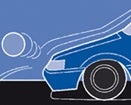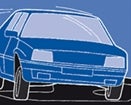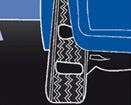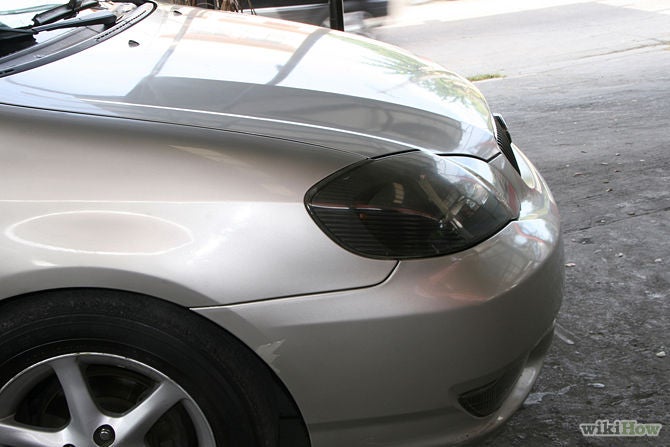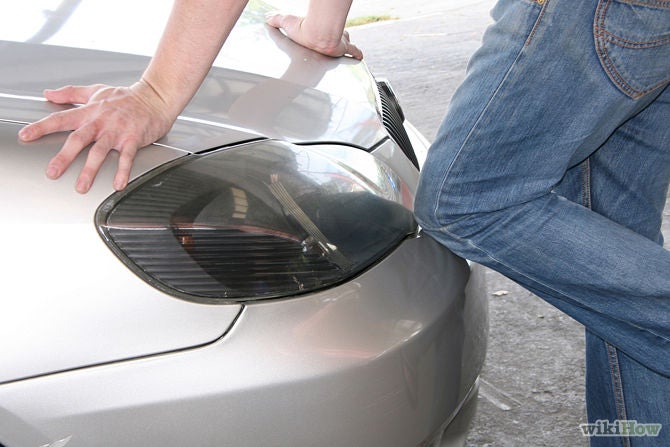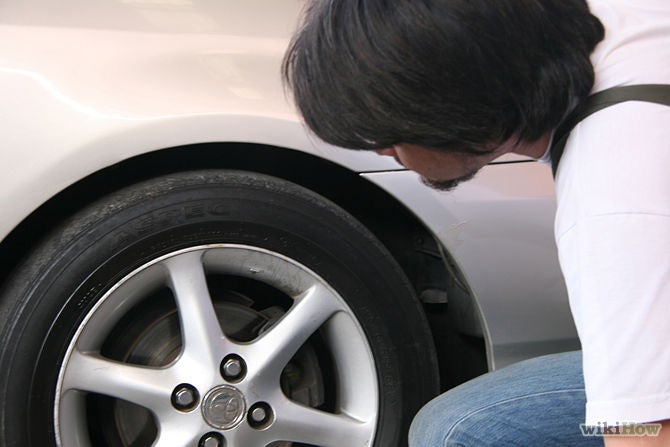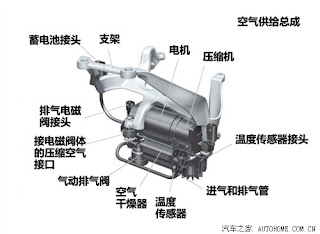Speaking
about the air suspension system most people think too far too upset, because in
our minds it is either to please the big boss of high-end luxury car, or is for
those who deal with ultra-running speed humps or bad road, orIt is used to give
the opportunity to run wild in a luxury SUV. But in fact the air suspension
system can justifiably claim to be a "simple good cause," the guy, it
involves something even better than your home golf turbocharged or DSG gearbox
is much less, but is improving ride comfort is far less urgent to improve
combustion efficiency and necessary.
Air
suspension is the use of air suspension shock absorber, mainly to adjust the
air volume and pressure of the air damper by air pump, the hardness and elastic
modulus can change the air damper. By adjusting the amount of air pumped, you
can adjust the air damper and the stroke length of the chassis can be raised or
lowered.
Air
suspension with respect to conventional steel suspension system, has many
advantages. Such as high-speed driving, the suspension can be hard to improve
vehicle stability; and low or bumpy roads, the suspension can be softened to
improve comfort.
Why use air suspension?
Very
simple, because the average by a coil spring and shock absorber tube consisting
of a suspension system and can not adjust the firmness and height. After the
length and elasticity of the coil spring calm, suspension of height with hard
and soft characteristics of curing down body will not change; the calm after
the damping cylinder, the response speed and shock-absorbing characteristics of
the suspension is also not changed.
But the
problem is with the state of the vehicle with the road is changing, ah, for
example, who do not want to run bad road when the suspension is soft and
comfortable, solid and stable when running the curve. Or again a little stingy,
when the rear brake if the front suspension can timely hardened alleviate nod
degree, accelerated time hanging harden reduce the rise, and that nice ah, the
body is always well-organized. To achieve all of these, it would require the
entire suspension system, or even each individual wheel suspension damping
characteristics can be quickly changed.
On the
other hand there is a lot of flexibility to change the vehicle body from the
need to distance. Such as customary "stick to the ground," but fear
"Road see injustice," the car who needs another example of some
heavy-duty commercial vehicles manned cargo. Of course, we are most likely to
imagine that those who need off-road vehicles run on both sides of the city
suburbs and SUV. If you have seen our era film footage of the off-road users
should remember that the inside of the Q7 and Touareg, the two of them are
equipped with height adjustable air suspension system, which can be described
in the project day to shine, this is for us to provide today's article rich
material.
As
stated above ordinary coil spring suspension system's physical properties can
not be changed unless replacement parts, so the manufacturer can only be based
vehicle positioning and sales area, to make a compromise set to
"maintaining the status quo." So not convinced engineers thought the
air with readily available hardware and software to be made or height
adjustable suspension system.
Air
suspension How does it work?
In fact
there are many types of air suspension, both soft and hard only adjustable
height can not be adjusted, but also the level of hardware and software can be
adjusted, for example, in the early part of the application of air suspension
system limo, then adjust the two air chambers to change the air flow between
the hard and soft suspension, but not with height adjustment function. This
paper places the prevailing level of hard and soft adjustable air suspension as
an example.

Through
the above chart shows, air suspension with our body structure is actually
familiar form of a coil spring + shock absorber tube is almost exactly the
same, but in the upper portion of the coil spring has a closed chamber, by
changing the chamber volume (up and down direction), you can change the length
of the spring, to adjust the body from the ground and to some extent changed
the hard and soft characteristics; additional vent damper part by changing the
size of the motor, thereby adjusting the damping force of the shock absorbers.

Since
you want to change the volume of the gas chamber through inflated, it is bound
to involve a set of gas pumps with high-pressure gas storage mechanism. The
number and level of the body to maintain inflated amount, by corresponding
sensors and electronic control unit to decide. Our Volkswagen Touareg for
example, the electric pump mounted on the chassis front passenger seat is
probably the following location, and the high-pressure gas tank is located next
to the trunk spare tire.

When the
body needs to be raised, the system issued a directive to make the compressed
air pump starts and the gas tank inside the compressed air supply to the spring
air chamber inside, if you need to reduce the body only needs to control the
exhaust valve exhaust air can be. As for the actual height of the body by the
side of each vehicle wheel height sensors to monitor and revise. In the end
when it needs to be raised when the need to reduce it? One can select interface
to control by the driver through the car's model, on the other hand the system
will automatically be automatically adjusted according to vehicle speed, road
shock and other reference data.
The
driver can follow the road from inside five modes need to choose, body height,
while the suspension hardness change accordingly change automatically. Of
course, taking into account the vehicle's stability and security, air
suspension system will automatically change the condition of the vehicle from
the ground. For example, in general a paved road, the Audi Q7 permanent ground
clearance of 180mm; but when the vehicle speed reaches 120 km / h and kept more
than 30 seconds later, the suspension will automatically lower the body's
ground clearance 15mm, so better high-speed stability; if the speed for 20
seconds to keep the 160 km / h, the body will be reduced by 15 mm, the ground
clearance is adjusted to just only 150mm.
Go wild
and occasions, off-road mode allows the body ground clearance increased to 205
mm, helping to keep the Audi Q7 100 km / h in the general security bumpy
mountain road by speed; the high-order mode allows the vehicle ground clearance
increased to 239 mm, rose to the highest Q7 approach angle of up to 24 °,
departure angle reaches 25 °, the maximum wading depth of 535 mm.
The
other hand, the Touareg's air suspension provides four kinds of body height and
three damping modes, respectively, through the back of the vehicle height
adjustment lever knob and roll damping mode switching from the main regulator.
On the surface can be combined 3X4 = 12 modes, but in fact the ground clearance
required damping mode to select a compromise, such as when SPORT mode the
damping, the ground clearance is no way to go to the maximum, so driving those
who still want to grasp the actual height of the body according to prompts
dashboard.
What are
the limitations of the current still?
The more
complex the system architecture also means more factors caused the failure, so
the air suspension system problems of probability and frequency than ordinary
coil spring suspension system. First, adjust the ride height of the air as a
"propulsion", damper seal fiasco, if there is leakage of air
suspension, then the whole system will be in a "paralyzed" state;
secondly, because of the low air density relationship, with air suspension
damping characteristics to make real-time adjustment, the response speed of the
system and not the common hydraulic active suspension system.

In
addition, compressed air from the pump, if you frequently adjust the chassis
height, but also may cause overheating pump system, will greatly shorten the
life of the pump, test drive the day we have encountered since the pump can
overheat protection and short-term adjustment car high. Although there are
limitations can not be avoided, but after I consult the brand and our service
shop that, as long as the normal use of the words air suspension failure rate
is not higher than other car parts, now rarely encountered because the air
suspension itself damaged parts The cause of the fault. (Source: Pacific
Automotive cloud lit)
★ Interpretation fast
and stable flying carpet secret air suspension
Childhood,
we read many fairy tales, for the future also has a variety of fantasy, although
different protagonists different adventures, but there always seems to have a
flying carpet, carrying us speeding. Growing up, we know that a lot of dreams
are only illusions, and carpet has become a reality, it is the car. It took us
rolling down the road of life, and let our "dream of flying carpet"
more comfortable and more stable Secrets - air suspension, we are saying today
is the protagonist.
● Define air
suspension
Suspension
means simply, it is the general term for the connection between the body and
the wheels, by the shock absorbers, the guide means and the elastic components,
air suspension with air springs is broadly as the suspension of the elastic
element.
● Historical air
suspension
Air
suspension is not only born in recent years. In the early 1930s, Harvey •
Firestone (Harvery Samuel Firestone) in his friend Henry • Ford (HenryFord) and
Thomas • • Alva Edison (ThomasAlvaEdison) technical support, developed the air
column form the air spring suspension system.
So in
1934, Harvey • Firestone in his own company (Firestone Tire and Rubber Company)
in the first real air springs for the automotive industry. In 1938, interest in
GM's happened to the air spring suspension system is installed on the bus. They
cooperate with the Firestone company, he conducted the first round of tests in
1944. And in 1953 began production of passenger cars equipped with air
suspension, which is the beginning of commercial vehicles using air suspension.
Before
we understand the air suspension structure Let us look at the difference
between the air suspension and the suspension of the ordinary, the elastic
element common suspension spring, between the body and acts as an elastic
contact of the tire, and bear and transfer the vertical load , ease and curb
the impact caused by uneven road and so on, in order to accelerate the shock
absorber damping vibrations, limiting body and wheel vibrations.
The air
suspension with air springs replace the ordinary spring as the elastic member,
it is because of a compressible and expandable gas, so you can play in addition
to the air spring between the body and the wheels make contact elasticity to
withstand and transfer the vertical load, impact mitigation and suppression
caused by uneven road, you can also take the initiative to adjust the body
height, which do the groundwork for the next we have to mention electronic
control suspension system.
○ air suspension
structure
The air
suspension system generally consists of air springs, shock absorbers, guiding
structure, the air supply unit (such as air compressors, single valve, gas,
cylinders, etc.), height control valve. Now many brands, especially pay
attention to the comfort of luxury cars or attention by a lot of SUV models are
equipped or can be equipped with air suspension, here let us recently in the
limelight of the new Audi A6L, for example, be carded
Air
springs are added to the compressed air in the flexible sealed container
utilizing the compressibility of air to achieve a non-metallic resilient spring
action. It has excellent elastic properties, thereby improving the vehicle
running comfort. And no matter how much the vehicle load, can be selected by
changing the air pressure. For example, by adding additional air chamber means
to increase its internal volume, can reduce the stiffness.
Air
suspension system to resolve
Meanwhile,
according to the compressed air used in different containers, air springs and
membrane capsules have two forms, bagged air spring is sandwiched cords rubber
balloon and enclosed therein composed of compressed air. Airtight inner layer
made of good rubber balloon and the outer layer is made of oil-resistant
rubber. Enclosed between the Festival and the Festival steel waist ring, the
intermediate portion does not have the radial expansion and to prevent friction
between the two sections. The diaphragm air spring sealed balloon made of
rubber diaphragm and metal parts composition, will produce radial expansion. In
the production car we've seen are mostly membrane air spring, and more
applications in the modified field is bagged air spring.
○ shock absorbers
Air
suspension at the rear suspension, shock absorbers and air springs are
separated from the body of the level of regulation by the air spring, and we
often say "Flex" has been referred to the independent shock absorbers
responsible, in After the suspension of the new Audi A6L, the shock absorber
using ZF company's products, this CDC variable damping shock absorber
built-proportional valve, which can continuously control the fluid flow in the
shock absorber to achieve adjustment damping coefficients. Front suspension is
also true, but considering the space problem, it will air springs and shock
absorbers CDC variable damping is integrated.
○ guide means
Air
suspension with ordinary suspension guiding mechanism is not much difference,
the new Audi A6L below shows the optional air suspension and anatomy ordinary
suspension structure, also you can clearly see the air spring instead of the
original a coil spring to become an elastic element.
Air
suspension system to resolve
○ air supply unit
Air
suspension system to resolve
The air
supply unit consists of an air pump, air dryer, gas tank and other components,
air supply assembly is generally placed in the engine compartment or trunk.
○ height control
valve
Height
control valve is an important part of the air spring suspension system, its
role is to make an air spring under load are to maintain a certain height.
Advantage of air spring, and only in the case of using a height control valve
can be fully reflected. When the vehicle load increases, the body is equipped
with height control valve will be down, connecting axle and height control
valve pendulum rotation drive cam shaft is rotated so that the piston and the
mandrel move the exhaust valve is closed, into the valve opens, at this time,
coming from the intake port of the compressed air into the airbag. With the
rise in pressure inside the balloon, the air spring height increases, the body
will also rise, because the intake valve is closed to move the pendulum, then
height control valve in a state of equilibrium. When the vehicle load is
reduced, due to excess pressure inside the balloon, the air spring increases,
and thus the body is also increased, and therefore, rotation of the pendulum,
driven by the camshaft is rotated, so that the piston and ram down, so that the
exhaust valve opens, the intake valve is closed, the balloon of excess pressure
to the atmosphere. The body back to normal levels, then, the jack and on the
move, the exhaust valve is closed, the height of the valve and in a state of
equilibrium.
● Electronic Control
Suspension System
With the
continuous development of science and technology, electronic control suspension
system enters into our lives. Early air suspension merely mechanical body
height will remain within the set range, now equipped with an electronically
controlled rear suspension car when load, speed, road conditions and other
driving conditions change, the active suspension system can automatically
adjust the suspension stiffness (vehicle adjustment and single wheel
adjustment), but also by adjusting the air spring, to adjust the height of the
purpose of the body, which can meet the cars ride and handling all aspects of
stability requirements. So that the electronic control suspension system can be
described as standing on the air suspension of the "shoulders of
giants" on.
○ Dynamic Chassis
Control Unit
Air
suspension system to resolve
The new
Audi A6L is equipped with a dynamic chassis control system, dynamic chassis
control system and vehicle stability system (ESP) via a data bus to complete
the transmission of information, based on travel demand, the dynamic chassis
control system can pump, dispensing valve and CDC variable damping The
proportional valve is controlled.
For
example, we have chosen while driving dynamic mode, then the control system
will receive instruction on the implementation of the above mentioned elements
are controlled, CDC in the proportional valve can be adjusted to a minimum to
reduce the flow of damping fluid velocity to achieve tight stretch of driving
experience, the air spring pressure air will be reduced accordingly so highly
compressed, so that the lower body; if we want to create a comfortable driving
state, pump will provide more high-pressure air to tank, at the same time, the
control unit which will tell the dispensing valve to give air pressure air
spring delivery. Meanwhile the air suspension control unit via FlexRay
in-vehicle networking standards and automotive networking, enabling
cross-system and other important body acceleration signal, eliminating the need
of early automobile systems require specific acceleration sensors.
Air
suspension system to resolve
○ Here it is
necessary to mention the body during the process of raising or lowering the
details of the transition from the highest level to the lowest position, the
system will this process is divided into three parts, the front will be
dropping the first third of the stroke, is completed, the rear third of the
stroke decreases, thereby further action will be completed twice from the
highest to the lowest shift in the whole process, chassis control unit and the
dispensing valve has been working in collaboration.
Air
suspension system to resolve
Air
suspension system to resolve
○ As the driver after
you, via the MMI system in the comfort, auto, sports and choose from four modes
defined in "automatic" mode, the new A6L to more than 120 km / h
speed with more than 30 seconds, suspended frame will automatically be reduced
by 10 mm, and provides better driving stability (speed of less than 35 km / h
back to the initial height), in the "active" mode, the suspension
starting height is lowered by 10 millimeters. In contrast, "elevated"
mode, this mode A6L space vehicle from being an extra 10 mm increased to over
small obstacles, the vehicle speed over 100 km / h will automatically fall back
to the original height. And A8L compared with height adjustment range of the
system is relatively small, intuitive feel for the driver may not be so
obvious, variable damping and stiffness characteristics of touches for comfort
have significant control or assistance.
Air
suspension system to resolve
Select
Dynamic mode while power output is not only more active, steering wheel
feedback intensity has increased significantly, significantly improved pointing
accuracy. The air suspension can be adjusted to the hard state, became very
nervous the whole car tight, give the driver a sense of control purely
mechanized.
Back
comfort when comfort mode, the air suspension good filter road vibration, while
maintaining proper firmness. Driving experience is still the familiar calm
style.
Full
Summary:
In fact,
the air suspension is not a mystery, Airmatic suspension system such as the Mercedes-Benz
S-Class is equipped with the Porsche Cayenne S and the Turbo models can
optional PDCC Porsche Dynamic Chassis Control system, etc., many models are
equipped with the optional air suspension or possible shelf or electronically
controlled suspension system. We bring our air suspension comfort while
intoxicated driving experience, we should also see the system structure is more
complex because the air suspension failure probability and frequency much
higher than the coil spring suspension system, if the air shock absorbers leak
occurs, then the whole system will be in a "paralyzed" state. And if
you frequently adjust the chassis height, but also may cause overheating pump
system, it will greatly shorten the life of the pump. The so-called things are
no absolutes, for his is the best.


